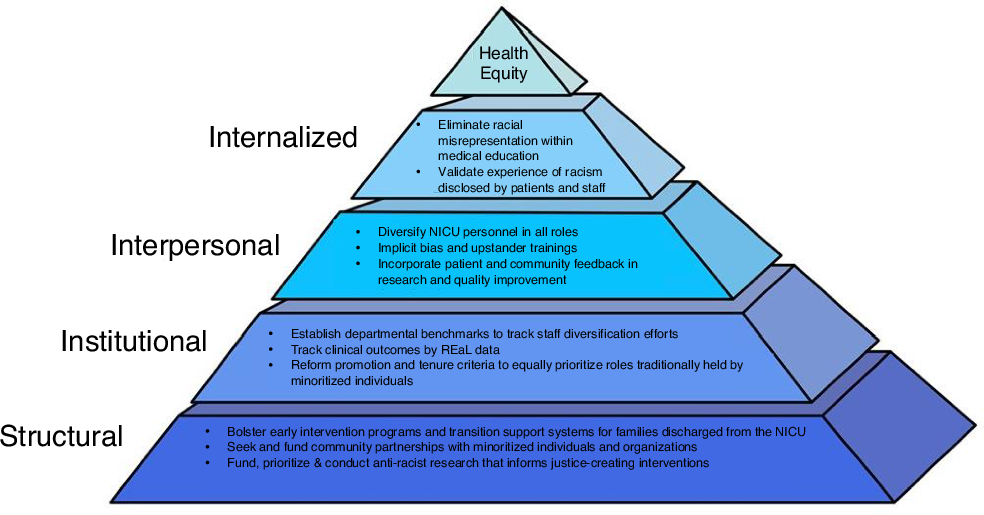Socioeconomic Status Shapes Access to Advanced Psoriasis Therapies – Dermatology Times

Report on Socioeconomic Disparities in Psoriasis Treatment and Alignment with Sustainable Development Goals
Introduction
A recent analysis of the CorEvitas Psoriasis Registry, presented at the Fall Clinical Dermatology Conference 2025, reveals significant disparities in the treatment of plaque psoriasis within the United States. The findings indicate that a patient’s access to advanced systemic therapies, such as biologics and small molecule inhibitors, is strongly correlated with the socioeconomic status of their neighborhood. This report examines these findings through the framework of the United Nations Sustainable Development Goals (SDGs), highlighting critical challenges to achieving health equity and reducing inequality.
Key Findings from the Study
The research investigated the relationship between the Area Deprivation Index (ADI), a measure of neighborhood socioeconomic disadvantage, and treatment patterns for 7,132 patients with plaque psoriasis.
- Treatment Distribution: Of the patients studied, 62.1% initiated a biologic, 19.4% started a small molecule inhibitor, and 18.5% were prescribed a conventional systemic agent.
- Socioeconomic Gradient: A clear, stepwise relationship was identified between neighborhood deprivation and the likelihood of receiving advanced therapies. For every 10-point increase in the ADI score, the odds of a patient initiating an advanced therapy decreased by 8%.
- Significant Disparity: Compared to patients in the least deprived neighborhoods, those in moderately deprived areas had 32% lower odds of receiving advanced treatment. This gap widened to 42% for patients in the most deprived neighborhoods.
- Insurance In-Effectiveness: The disparity persisted regardless of insurance type. Among privately insured patients, those in the most deprived areas were 45% less likely to receive advanced therapy. For publicly insured patients, the reduction was 34%.
Analysis of Disparities through the Lens of Sustainable Development Goals (SDGs)
The study’s conclusions directly impact the progress toward several key SDGs, demonstrating how socioeconomic factors create barriers to fundamental global objectives.
SDG 3: Good Health and Well-being
This goal aims to ensure healthy lives and promote well-being for all at all ages. The findings challenge the achievement of Target 3.8, which calls for universal health coverage, including access to quality essential health-care services and safe, effective, quality, and affordable essential medicines.
- Inequitable Access to Care: The systematic denial of advanced, more effective therapies to populations in deprived areas undermines the principle of universal access to quality healthcare.
- Management of Non-Communicable Diseases: Psoriasis is a chronic, non-communicable disease. Failure to provide optimal treatment based on socioeconomic status compromises efforts to manage such conditions effectively, impacting long-term health and well-being.
SDG 10: Reduced Inequalities
This goal focuses on reducing inequality within and among countries. The research provides clear evidence of health inequality linked directly to socioeconomic status, a core concern of SDG 10.
- Socioeconomic Determinants of Health: The study confirms that socioeconomic disadvantage is a primary driver of health disparities, directly contravening Target 10.2, which aims to empower and promote the social, economic, and political inclusion of all, irrespective of economic status.
- Barriers to Equal Opportunity: Unequal access to medical treatment represents a failure to ensure equal opportunity and reduce inequalities of outcome, as stipulated in Target 10.3.
Recommendations and Conclusion
The persistence of these treatment disparities, even among insured populations, indicates that systemic barriers beyond insurance coverage influence healthcare access. Addressing this issue is essential for advancing health equity and meeting global development commitments.
Proposed Interventions
- Enhanced Provider Education: Increase awareness among healthcare providers about the impact of socioeconomic factors on treatment decisions and health outcomes.
- Patient Support Programs: Implement patient navigation and support programs to help individuals from deprived areas overcome barriers to accessing advanced care.
- Policy Reform: Advocate for policies aimed at reducing the cost burden of advanced therapies and ensuring equitable distribution of healthcare resources.
In conclusion, the disparity in psoriasis treatment is a clear indicator of broader systemic inequities that hinder progress toward SDG 3 (Good Health and Well-being) and SDG 10 (Reduced Inequalities). A multifaceted approach that addresses cost, education, and systemic barriers is required to ensure that all patients, regardless of their socioeconomic background, have access to the most effective treatments available, thereby creating a more equitable and healthy society.
1. SDGs Addressed or Connected to the Issues
-
SDG 3: Good Health and Well-being
The article’s central theme is health, specifically the management of psoriasis. It discusses disparities in access to advanced medical treatments, which directly impacts the well-being of patients and relates to ensuring healthy lives for all.
-
SDG 10: Reduced Inequalities
The core finding of the article is the “clear gradient of inequality” in healthcare access based on socioeconomic status. It explicitly details how patients from deprived neighborhoods face significant disadvantages in receiving modern medical care, highlighting inequality within a country.
2. Specific Targets Identified
-
Under SDG 3: Good Health and Well-being
-
Target 3.8: Achieve universal health coverage, including financial risk protection, access to quality essential health-care services and access to safe, effective, quality and affordable essential medicines and vaccines for all.
The article directly addresses this target by highlighting the lack of access to “advanced systemic therapies” for psoriasis, which are essential medicines for managing the condition effectively. It notes that these therapies are “substantially more expensive,” creating financial barriers. The study’s conclusion that disparities persist “even when insured” points to failures in achieving universal access to quality healthcare services and affordable medicines.
-
Target 3.8: Achieve universal health coverage, including financial risk protection, access to quality essential health-care services and access to safe, effective, quality and affordable essential medicines and vaccines for all.
-
Under SDG 10: Reduced Inequalities
-
Target 10.2: By 2030, empower and promote the social, economic and political inclusion of all, irrespective of age, sex, disability, race, ethnicity, origin, religion or economic or other status.
The article demonstrates a lack of inclusion based on economic status. It shows that patients living in “socioeconomically deprived neighborhoods” are systematically less likely to receive advanced treatments. This exclusion from the benefits of modern medicine based on where a person lives is a direct example of the inequality this target aims to eliminate.
-
Target 10.3: Ensure equal opportunity and reduce inequalities of outcome…
The research reveals a clear “inequality of outcome” where patients in poorer areas have reduced odds of receiving the most effective treatments. The article states that patients in the highest deprivation tertiles had “42% lower odds” of starting an advanced therapy. The call to action for “targeted interventions to close the access gap” aligns with the goal of reducing such inequalities.
-
Target 10.2: By 2030, empower and promote the social, economic and political inclusion of all, irrespective of age, sex, disability, race, ethnicity, origin, religion or economic or other status.
3. Indicators Mentioned or Implied
-
Indicators for Target 3.8 (Access to affordable essential medicines)
- Proportion of patients receiving advanced vs. conventional therapies: The article provides specific data that can serve as an indicator of access to modern medicines. It states that among the patients studied, “62.1% initiated a biologic, 19.4% began a small molecule inhibitor, and 18.5% received a conventional systemic agent.” This breakdown measures the uptake of different quality tiers of treatment.
- Treatment disparity across insurance types: The article implies an indicator by noting that even among those with “private insurance,” patients in the most deprived areas were “45% less likely” to receive advanced therapy. This measures the gap in access that persists despite formal health coverage.
-
Indicators for Target 10.2 & 10.3 (Inequality based on economic status)
- The Area Deprivation Index (ADI): The ADI itself is used in the study as a direct quantitative measure of “neighborhood socioeconomic disadvantage.” The average score of 42.9 and the use of tertiles to categorize patients are indicators of the level of deprivation being studied.
- Odds Ratio of initiating advanced therapy based on ADI score: The article provides a precise statistical indicator of inequality. It states that “for every 10-point increase in ADI, the odds of initiating an advanced therapy dropped by 8%.” This quantifies the relationship between socioeconomic disadvantage and reduced access to healthcare.
- Disparity in treatment odds between socioeconomic groups: A key indicator mentioned is the comparison between the least and most deprived groups. The finding that patients in the “highest deprivation tertiles had… 42% lower odds” of starting advanced therapies compared to those in the lowest tertile is a direct measure of the inequality of outcome.
4. Table of SDGs, Targets, and Indicators
| SDGs | Targets | Indicators |
|---|---|---|
| SDG 3: Good Health and Well-being | Target 3.8: Achieve universal health coverage, including… access to… affordable essential medicines… for all. |
|
| SDG 10: Reduced Inequalities | Target 10.2: …promote the… inclusion of all, irrespective of… economic or other status. |
|
| SDG 10: Reduced Inequalities | Target 10.3: Ensure equal opportunity and reduce inequalities of outcome… |
|
Source: dermatologytimes.com
What is Your Reaction?
 Like
0
Like
0
 Dislike
0
Dislike
0
 Love
0
Love
0
 Funny
0
Funny
0
 Angry
0
Angry
0
 Sad
0
Sad
0
 Wow
0
Wow
0



















































.jpg.webp?itok=0ZsAnae9#)






/environment-climate-change-and-health-(ech)/water-sanitation-hygiene-and-health-(wsh)/landfill-tuvalu-36092.tmb-1200v.jpg?sfvrsn=5c21fe40_1#)



















